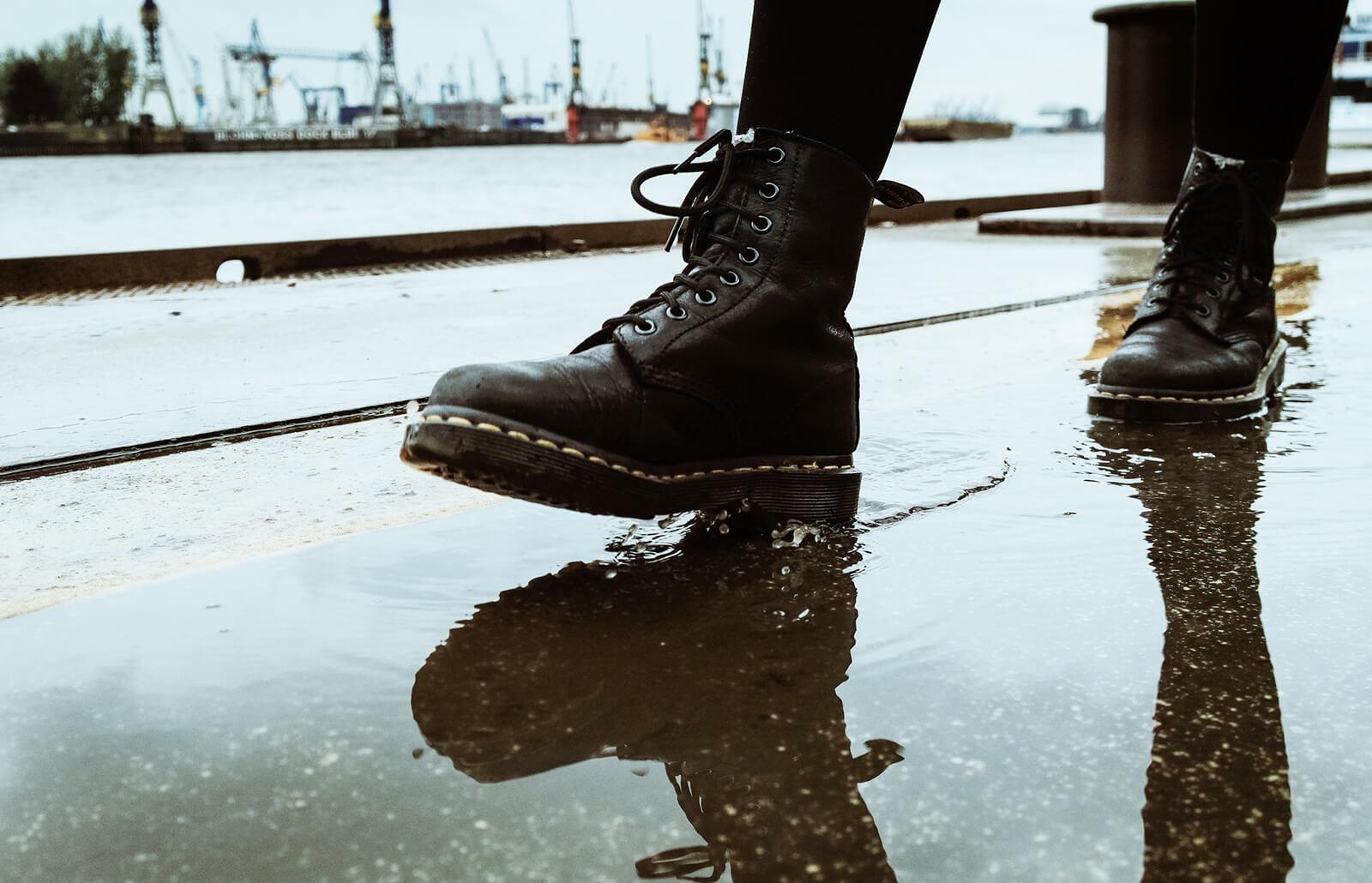The most fantastic hack I can tell you is when you wear the shoes and do not slip while walking; it means the boots are slip-resistant. Jokes aside, slipping is a grave concern. I remember I was at a wedding. I walked through the doorway, making my grand entrance.
My foot slid on the ground, and like in slow motion, I fell flat on my back. All the while, the cameraman was recording the most embarrassing moment of my life. I feel your pain.
To ensure a similar incident does not happen to you, this article will outline several processes through which a slip-resistant shoe can be recognized.
How to Tell if Shoes are Slip Resistant
There are several attributes in the design of the outsole that indicate to shoes being slip-proof. The shoes will have a large surface area directly placed on the ground. It will have rounded edges to help expel liquids from under the shoe. There will also be tread patterns and grooves to increase friction. It is recommended to try on shoes and walk on different textured surfaces to feel them.
Identifying Non-Slip Shoes
You will notice that most of these methods apply to closed-toed shoes such as joggers, sneakers, or boots. To some extent, these can also refer to sandals. If you are looking for non-slippery heels, I honestly do not think there is such a thing.
You will often see that the box of the shoe or the description advertises it to be ‘anti-slip.’ Varying designs could accompany them for the sole that could portray better grip. However, do not be fooled by visually appealing attributes, as they can be misleading. The only guarantee you will have is prior knowledge about slip-resistant features.
It would be best if you looked out for the following factors before purchasing a slip-resistant pair of shoes:
Examine the Outer Sole
The outsole is exactly what you infer from the word: the outer and bottom part of the shoe that comes into contact with the ground. The most vital factor with the outsole is the grip. When your foot receives traction, it will remain steady while you move. Within the design of the outsole, consider the following characteristics:
It is basic physics that the more surface area in contact with the floor increases the strength of the hold your shoes will maintain and minimizes skidding chances. The surface area concept also explains why heels are slippery: most of the area of heels does not come into contact with the floor. It is imperative that at least your heel and ball of foot region push against the ground.
You might be wondering that to increase surface area; shoes should be a more rectangular shape. While that would provide balance, the shoes would look very ugly. Besides the superficial reasoning, when shoe edges are curved, it does not allow liquids to be trapped under the shoe. Round edges would also provide more flexibility in foot movements as compared to flat ones.
Next, you should flip the shoe to check its tread. Tread here refers to any shapes under the sole such as hexagons or even circular lines. Small hexagons are deemed the best shape as they also help propel water from under your shoe. These shapes should ideally not be too shallow, as that would not help in traction, nor too deep that your boots are riddled with pebbles.
The purpose of these treads is to increase friction between the floor and your feet. Friction helps surfaces lock onto each other and resist sudden changes in motion such as slipping. I feel like this article will help clear physics concepts as well.
Finally, it would help if you were looking at grooves in your shoe. These grooves refer to the bumps you see along the edges of shoes. They help in expelling water and will keep you upright on your feet.
Inspect the Shoe Material
You might be thinking that the more challenging the outsole, the better grip it would provide. You would be utterly wrong in this line of thought. Consider it as a rule: soft soles equal more grip. Soft also means that the shoes will be comfortable to walk in all day. They will provide flexibility that helps a shoe conform to its surroundings and stick to the floor when required.
A shoe outsole can be made from many materials such as PVC, rubber, and polyurethane. Rubber is highly recommended due to its pliable nature, which can even maintain its grip in wet areas. Plus, rubber is durable and does not get deformed by hot or cold temperatures.
Try the Shoes On
I was only partly joking when I first mentioned you should wear the shoes to test them. I did not mean that you put them on, take a few steps, and claim that they do not slip. I would recommend running to the nearest slippery surface, like a tiled floor, and try skidding on it wearing the shoes. If the shoes can help you maintain your balance, they pass the slip test.
Why are Slip Resistant Shoes Necessary?
I can give you a long list of mishaps that can occur if you go around slipping on every surface. Chances of tripping increases if your foot slips. You could injure yourself if you twist an ankle or land at a painful angle. Do you want to end up in the hospital due to slippery shoes?
It could also be raining or snowing outside, and the wetness greatly reduces friction. You need a better grip than ever if you do not want to fall every few steps in the snow.
Most buildings also have tiled or linoleum floors. Walking inside those buildings would be akin to walking on banana peels. You would just be sliding across the room.
How to Make a Shoe Slip Resistant?
It would be best if you broke in your shoes by scuffing them on a rough-textured surface such as brick. You can also use sandpaper to roughen the outer sole to provide traction.

